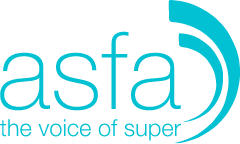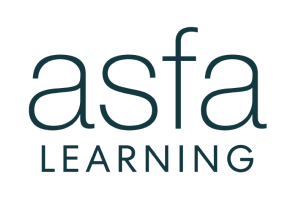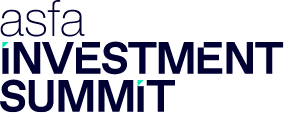It’s just over three months since Australia’s borders were closed, but in that time, what started as a health crisis has morphed into an economic and social crisis on a scale we haven’t seen since the Great Depression. According to the IMF, just as 75 per cent of countries are reopening, the pandemic is intensifying in developing countries. In the absence of a medical solution, it predicts a deeper than expected recession in 2020, and a slower recovery in 2021. Global output is projected to decline by almost 5 per cent this year and 95 per cent of countries are predicted to have negative per capita growth).
Looking forward, the news isn’t much better. The global nature of the crisis is hampering recovery prospects for export-dependent economies, and geopolitical and trade tensions could damage global relationships at the same time as trade is projected to collapse by around 12 per cent.
If there is good news, it’s that Australia’s response to the pandemic has been among the most successful in the world – our health response has kept the spread down, and a massive government stimulus program, including JobKeeper, JobSeeker and early access to super, has kept our economy ticking over.
Our superannuation system has played an important role in Australia’s economic response. This put unprecedented pressure on funds as they implemented the early access to super while at the same time operating at full capacity, moving staff and call centres out of the office, and managing member outcomes and concerns as investment portfolios fell in line with chaotic, volatile financial markets.
The speed with which the pandemic hit gave the funds very little time to debate the sweeping changes. Within a week many “non-essential businesses” were closed, employees who could were working from home, and businesses were facing decisions not only about how to operate on a day-to-day basis, but how to lead their employees and their organisations through the crisis.
Our focus this month is on funds’ use of innovation and technology, and next month, in Part 2, we will look at leadership, the role of the executive team, their focus and initiatives during the pandemic. With both topics in mind, we interviewed senior executives from eight of our member funds to ask how they have innovated and used technology in response to COVID-19.
Our aim is to identify similarities and differences in responses, to highlight game changing moments – and to share these insights with our members. For most funds, the reality was that the pandemic did not fundamentally change their business strategy, but it did accelerate a strategy check-up and change some of the processes and rhythms. In many ways, this boiled down to a concept that First State Super termed “Emerging Stronger”; using the data on what worked to turn the pre-pandemic office into the flexible, digital, workplace of the future.
The same, but different
On one level, COVID-19 has affected every fund in the same way, so to some extent every fund has had the same experience. We found there were many similarities in the way funds responded. Conversely, there were also marked differences; some linked to the fund’s purpose, its vision and DNA, and some to the differences in the make-up of members, and their specific requirements.
Three themes emerged from conversations with super funds:
- Technology
- Agility
- Communication
Technology and rapid change
Every fund spoke of their reliance on technology during this time; not just administration and operations, but the BAU use of technology by all employees. They all spoke of their concerns when the pandemic hit: How well would their technology stand up to the challenge? And how would it respond to the need for more communication – with members, but also between team members and leadership? At any time of crisis, regular, transparent communication is essential, but how much is lost when face-to-face communication becomes Zoom?
First State Super found that technology enabled the business to work from home while continuing to service its members. However, what was lost was the “instant bump” meetings of being physically together as interactions moved into the virtual world, said group executive for finance, strategy & transformation, Tim Elliott
“With all interactions via a virtual meeting now, I miss the quick in person problem solutioning to resolution from being in the office. With a solid diary of virtual meetings, the work day has expanded, which really puts managing time closely into focus,” said Elliott.
The upside, Elliott said, is that productivity improved even in the face of massively increased call volumes and the necessity of moving the 100 members of the service centre to work from home, where they were expected to work as a team from vastly different locations, in the space of two weeks. The business rhythm changed, for the better. Gone were the three to four-hour management meetings usually held at the beginning of the week. As the executive team embraced a true agile approach, these became a brief outline from each executive of his/her top three crucial actions for the week, followed by an update on progress and any stumbling blocks, at the end of the week. In Elliott’s words, “we hit, sprint and report back. We’re always on topic”.
Cbus chief technology and digital officer, Rob Pickering, spoke of the challenges of moving from a partial legacy system to a cloud-based contact centre overnight. It was the ultimate stress test for the technology, and a very quick way of finding out if a new platform worked, but also the impetus to develop new ways of responding to huge volumes of inbound calls. At a time when markets were in chaos, member questions naturally rose (everyone said this) and a focus on member outcomes became crucial. In the case of Cbus, this meant creating a more sophisticated chat bot to deal with the standard questions, so that complex questions could be dealt with by humans.
“We historically had a legacy telephony platform that was partially in the cloud but we weren’t confident that we would be able to handle the kind of volumes we were talking about at the quality levels we needed for staff working from home. Also, it didn’t have the capability to quickly turn on additional channel capability like chat and chat bots which we considered important as an alternate way for our members to communicate with us. We knew that the work to get the legacy platform operating the way that we might want it to was probably going to be more than the work to build up a new platform on the cloud infrastructure we had available to us and so we took a decision with the business to make that change and to scale up really quickly. So we launched it in under a week, and we’ve been running on that really successfully for the last twelve weeks”, Rob Pickering, Cbus
Tim Elliott from First State Super acknowledged that the extra pressure on call centres did cause a drop in service standards – but within acceptable limits, given that the leaderships team’s focus was on making sure that the operators in the call centre were ready to receive calls, and had the information they needed to answer questions.
We put a lot of effort into ensuring that the service centre were set up to help members so that we were providing the right messages to members about the impact of withdrawing from Super early but also helping members in need by having the process in place to ensure they were receiving the payments.
Tim Elliott, First State Super
One thing all funds agreed on was the importance of controlling the touch points with members – not doing everything but looking carefully at, and focusing on, what you do well.
At Sunsuper, for example, the fact
that administration is managed inhouse gave the team scope to create daily reports based on member questions across different dimensions: general statistics, demographic breakdowns and how members were using the technology and their experience of that. It also meant that significant changes could be implemented within 24 hours.
But it wasn’t only funds with in-house administration who were able to act quickly. Although some mentioned hiccups with external administrators delivering the ‘frictionless inbound customer experience’ they were looking for, increased pressure allowed funds to identify weaknesses in administrators and other service providers, which they said will help them pick and choose in the future, according to skill and area of expertise.
Another interesting point to emerge from the increased use of technology was that it highlighted differences in the way we talk about flexible work practices, and the unspoken reality of what is expected. According to chief strategy & impact officer at Sunsuper, Teifi Whatley, there are unwritten rules about how we work. She gave the example of the inconsistency between offering flexibility but still expecting that employees need to be officebound to attend meetings in meeting rooms. For Teifi, the challenge going forward will be to embrace real flexibility, acknowledge the gaps in words compared with practice and to make sure real flexibility is embedded in workplace process.
Agility and a speedy response
“We haven’t changed our strategy – but we’ve changed how we deliver our strategy”, Lisa Samuels, Chief Experience Officer, HESTA
Every fund, without exception, spoke of the need to move quickly and the necessity of agility and real-time responses. Speed was of the essence in getting administration and day-to-day operations up and running, with the use of technology, but it was also crucial in terms of strategy and communication. Lisa Samuels from HESTA highlighted a common theme when she said that HESTA had just finished building a new online member platform when the pandemic hit, “which meant that we could update the platform within 24 hours as the situation evolved.”
From a member outcome perspective, recognising that strategies or initiatives that needed to be changed due to changing circumstances is key. One of HESTA’s key areas of focus is helping members build financial confidence. This often means campaigning, and helping educate members about taking action to improve their retirement outcomes, for example by increasing contributions.
All of this had to change overnight, because as Lisa Samuels said, “we can’t be trying to talk to members about making contributions if they are facing financial hardship and are needing to access their super. We needed to reassess our normal program of communications and plot a new course. This didn’t mean stopping all communication – it meant tailoring the message to members’ new concerns and reality.”
For Phil Stockwell from Local Government Super, the main challenge was speed of response. Part of the solution was giving the team the confidence to believe they can do what is needed, because “yesterday’s answer may not be tomorrow’s answer, and the team need to be ok with that.”
The main challenge was speed of response – increasing the frequency of communication to members and staff, while at the same time, implementing a new mix of communication channels like webinars, social media, phone consultations, as well the traditional channels such as website, emails, and letters to some members.
Phil Stockwell, LGS
Again, administrators were called out for their speedy response. Alexander Hutchison, CEO for EISS Super, acknowledged the pressure their administrators were under, and the fact that they didn’t break should be commended because of it.
At the end of the day, account-based pensions were paid, contributions were still processed, the early release payment was dealt with, in no way did the system fall over.
Alexander Hutchison, EISS Super
The bottom line for Phil Stockwell, as for so many we spoke to was that funds need to be able to emulate the kind of speed and agility we usually associate with technology and innovation companies.
The pandemic has accelerated the pace of change for us, as for many others. We were already thinking about the future quite deeply and this has accelerated that – it hasn’t changed our strategy, but it has changed the emphasis.
Communicate, communicate, communicate
The intersection of technology and communication
“So often, digital environments are about doing things quickly and efficiently, but I think it needs to be more than that. We focus on making an emotional connection and ensuring our members feel supported, even if we’re operating virtually,” Lisa Samuels, HESTA
One of the biggest challenges for funds was that at the very moment members needed increased support, more education and more communication, call centres and staff members were being sent home, operating differently and sometimes with new technology. While challenging, keeping connections was key. According to Rob Pickering, the importance of owning the touch points with members has always been understood, but COVID-19 sped up the process, by helping funds see the true value of an in-depth understanding of member pain points, and what they need to get right.
There were marked differences in the way different funds communicated – largely in line with their different member bases. For Sunsuper, which had more early access applications than some other funds, the importance of communication about how that was going to work, combined with the speed of transaction and the agility with which they responded to increased demand was key to success.
Teifi Whatley told us that rather than following usual recruitment processes “we reached out to our own staff to ask who they knew, whether they had family or friends who had been negatively impacted, who would be able to join the team for a period of time and be trained,” and took on 65 additional staff in this way.
Necessity really is the mother of invention. HESTA found a novel way of bolstering the teams which needed help from within the organisation. The initiative was called HESTA Tasker, loosely based on Air tasker, so that teams under pressure went out to the business to ask for help from others so that resources could be re-allocated internally.
Some teams were under a lot of pressure responding to COVID. For example, the administration team who were working with Link on early release payments, needed more people for their team. So, it was about saying, we need these skills and then identifying where in the business people with complementary skills could support and relieve some of the pressure.
Lisa Samuels, HESTA
Conclusion
In the end, there were more similarities than differences in funds’ responses to COVID-19. All spoke of the importance of technology, and the need for an innovation mindset at a time when usual work rhythms and processes were interrupted overnight. All fund leaders spoke of their overwhelming respect and praise for their teams, all of which juggled moving offsite with an increased workload – and made it all work.
If there were differences, they were reflective of funds’ member bases; all funds used data to gather insights about their members’ needs, and to use those insights to inform their decisions and communication strategy. Ultimately, it was concept of acceleration which really stood out. Most said that while their overarching business strategy had not changed as a result of the pandemic, the speed at which they are implementing change has. If there’s a positive from the bruising expe
rience of the past three months, it’s the clarity which working under sustained pressure has provided – about strategy, processes and rhythms. Funds share a great sense of hope that the learnings will be used to create a more flexible, streamlined and efficient business going forward.
Featured in this editorial:
- Alexander Hutchison, CEO, EISS Super
- Teifi Whatley, chief strategy & impact officer, Sunsuper
- Tim Elliot, group executive finance, strategy and transformation and chief financial officer, First State Super
- Phil Stockwell, CEO Local Government Super
- Rob Pickering, chief technology and digital officer, Cbus
- Lisa Samuels, chief experience officer, HESTA






